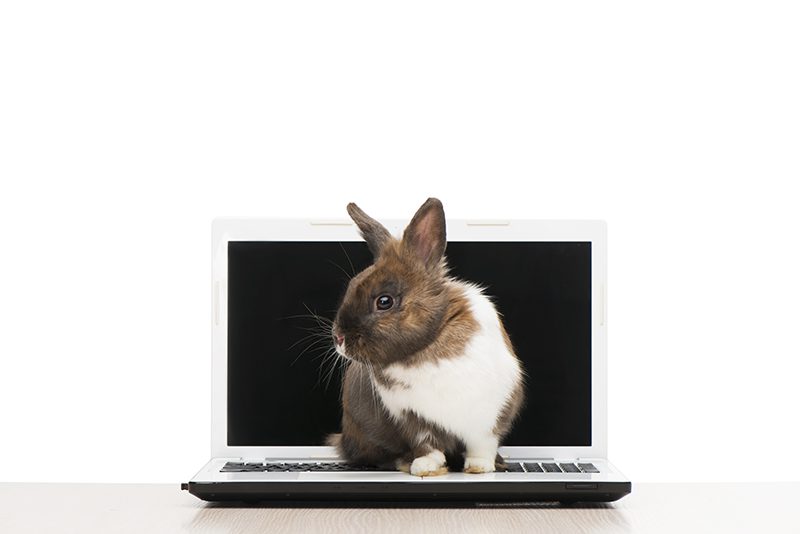Here’s a simple, straightforward and universally true statement that will set the context for this entire article: You’ll retain more clients if you treat them well. This includes treating them well while they’re at your practice for an appointment. One of the most effective ways to boost your level of service is to put yourself in the shoes of a client as he or she walks in your front door.
- How is the client greeted? How personalized is that greeting?
- How welcoming is the waiting area? How comfortable?
- How neat and clean is that area? How fresh does it smell?
- How professional does the reception team look and act?
- How long do clients need to wait to be taken to a room?
- How long do they have to wait to talk to a veterinarian?
- If there is a delay in service, how is that situation handled?
Take a look at your answers to these questions. If you are proud of your responses, then you’re already ahead of much of the competition. However, if the questions point out areas of service that can be improved, that’s not unusual. If that is the case, what action plan will you create?
To help create an improvement plan, you can ask a trusted friend to walk into the practice and then offer you his or her impression of what the area looks like; what is heard during their time in the waiting area; and what overall impression this experience gives about the veterinary practice.
As part of your hiring practices, remember the importance of soft skills as you interview people for a position. Your during-visit services will automatically be more appealing if clients are greeted by receptionists who enjoy engaging with other people, versus those who see client interactions as a necessary—but not necessarily enjoyable—part of their jobs.
Little things can make a big difference throughout the visit, and when you remember to focus on the client, this will likely boost his or her loyalty to you and your practice.
Greeting Clients
What happens when a client first walks into your lobby sets the tone for the entire visit. Quick ways to help clients feel valued include standing when he or she enters the lobby area, and slightly leaning towards the client and pet to show interest in them. Greet people with a friendly smile and make eye contact. Some receptionists like to shake hands with clients, while others prefer to offer a friendly greeting without the handshake involved. And, if you normally do like to shake hands, consider skipping this step during cold and flu season.
Providing coffee or other refreshments for clients while they wait can make them feel cared for. The receptionists can offer it during check-in, especially if someone is new to your practice. Even if the client declines, it can make a good first impression. Also, check to make sure you have the correct contact information for each client, doing so in a way that feels conversational, not rushed or rote.
Managers should train the front desk staff on how to enforce hospital policies that are intended to protect clients and pets. The staff needs to be able to explain their importance to the clients and why these policies were created in the first place. If a dog is off leash, for example, the receptionist would ask to have him put on leash, gently sharing how that helps protect others in the waiting room.
If possible, have separate waiting areas for cats and dogs to reduce the stress on both the animals and their owners. Another option is to use a room divider. Hooks for coats and umbrella stands are little things that can make the room feel more welcoming, too.
During the Wait
Let’s say that appointments at your practice are running 15-minutes behind schedule. There are ways to help make this wait seem shorter for your clients. This includes providing fresh reading material in the waiting room. Your practice can also give out pictures of cats and dogs for restless children to color while they wait. Hanging interesting artwork on the wall can also help.
Update the clients about their current wait time when you can, adding in bits of friendly conversation, whenever possible, to make the time feel less tedious. It may be helpful if you share with them why the practice is running late. It’s also courteous to tell the client how much you appreciate his or her patience.
Avoid sitting and chatting with your coworker while the client waits, unless you make it clear that the client is free to join in. Also, never “talk shop” or gossip whatsoever.
Soft music playing in the background can be soothing, while offering free Wi-Fi can help clients to check in at work or connect with family while waiting. Posting pictures of happy clients and their pets, along with thank you notes from them, can create an upbeat atmosphere. The use of air purifiers can make the waiting experience more pleasant for your clients.
It can also help to have disposable bowls available for cats and dogs so they can have a drink of fresh water. Even if they aren’t interested, their owners will likely appreciate the gesture.
During the Consultation
The most important aspect of a consultation is to provide personalized service to the client standing in front of you. Although it can be hard to put aside what may have just happened with a previous client, the person and pet who are currently there for an appointment want and deserve your full attention.
Smiling as you meet a client’s new kitten can go a long way in cementing your relationship; so can empathy if euthanasia needs to be discussed. Use the client’s name and the pet’s name during your conversation and explain what you’re doing and why. At the end, ask if the client has any questions and use clear language in explaining what wasn’t understood. Help clients to understand why you’re recommending things such as bloodwork or a change in their pet’s diet. The “why” can improve the odds that the client will agree to those recommendations.
Try to appropriately balance the time that a client spends with a technician versus the time spent with the veterinarian. Situations vary, but it often makes sense for veterinarians to spend more time with a new pet, while still giving ongoing clients enough time and attention.
After the Consultation
When the consultation ends, your team gets another chance to explain instructions to the client and answer their questions regarding the treatment of their pet, the invoice or something else entirely.
Provide each client with a written summary of what took place during the visit, including any key findings. Highlight when the next visit is scheduled, if relevant, and make sure the client has any food, medications or preventatives that were purchased during this visit. If you know that your client typically buys certain items, such as a medicated shampoo, you can ask if refills are needed.
If the client needs help getting an animal back to the car, provide that service. Better yet, offer it to everyone. Keep umbrellas on hand for when it’s raining and use them as you escort the client and pet to the appropriate vehicle. When a client needs to carry out something such as a heavy bag of dog food, or is juggling a cat carrier with two small children, jump up to assist them. They will appreciate your kindness.
What to Consider as Next Steps
Which of these ideas has your practice already implemented? What are the next steps you’ll be adding to boost your during-visit service to the next level? What’s on your wish list for someday? Consider the steps that you can take today to begin transforming your wish list into a reality.









